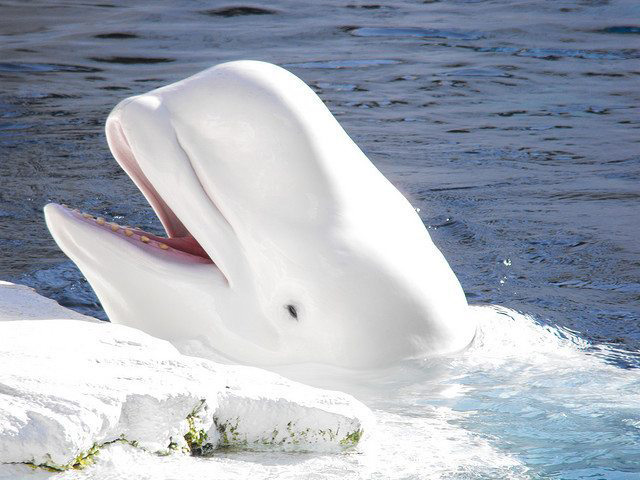5 Interesting Facts About Beluga Whales
With an average winter temperature of -30° F and the water consistently hovering at or below freezing, not a lot of people want to call the Arctic home. But those frigid temperatures that keep many away are actually the perfect environment for other amazing creatures, such as the beluga whale. Keep reading to find out more about these magnificent creatures.

1. They were built for the Arctic.
Beluga whales don’t just survive the cold. They thrive in it! With a layer of blubber that is five inches thick, they are protected from the bitter temperatures. They are also able to navigate the choppy, icy waters of the Arctic with ease thanks to a dorsal ridge down their backs.
2. But they aren’t built like other whales.
When you think of an animal with a flexible neck, a whale probably isn’t the first that comes to mind. But the beluga whale is unlike all other whales in that they are able to nod and turn their heads in all directions. This gives them a lot more mobility in the icy waters (and the ability to take in the beautiful sights of the Arctic).

3. They are very social animals.
Beluga whales enjoy each other’s company and gather in groups called pods. These pods can be as small as just a few whales, or they can be filled with hundreds of beluga whales ranging from the grey baby belugas that have yet to turn their distinctive white color to the elder belugas that can live to be 90 years old!
Shop Plastic-Free Holiday Gifts!
4. They communicate with songs.
Did you know that beluga whales are referred to as the canaries of the sea? That is because they sing songs to communicate with each other. Their tunes include whistles, moos, clicks, squeals and, yes, even chirps. However, some of these songs are sung at frequencies outside of the range humans can hear, so we can’t enjoy their entire melody.

5. They “see” using echolocation.
In the same way beluga whales use these sounds to communicate, they also use them to “see” underwater. Their clicks bounce off their prey and give them a “view” of the fish, crustaceans, worms or cephalopods they are hunting for a meal. They also use echolocation to avoid obstacles and find their way back to their pod.

These interesting facts about the beluga whale might not make you want to call the Arctic your home, but they do prove that old cliché true – beauty really is in the eye of the beholder. These majestic creatures are happier in their frozen home than they would be anywhere else!





